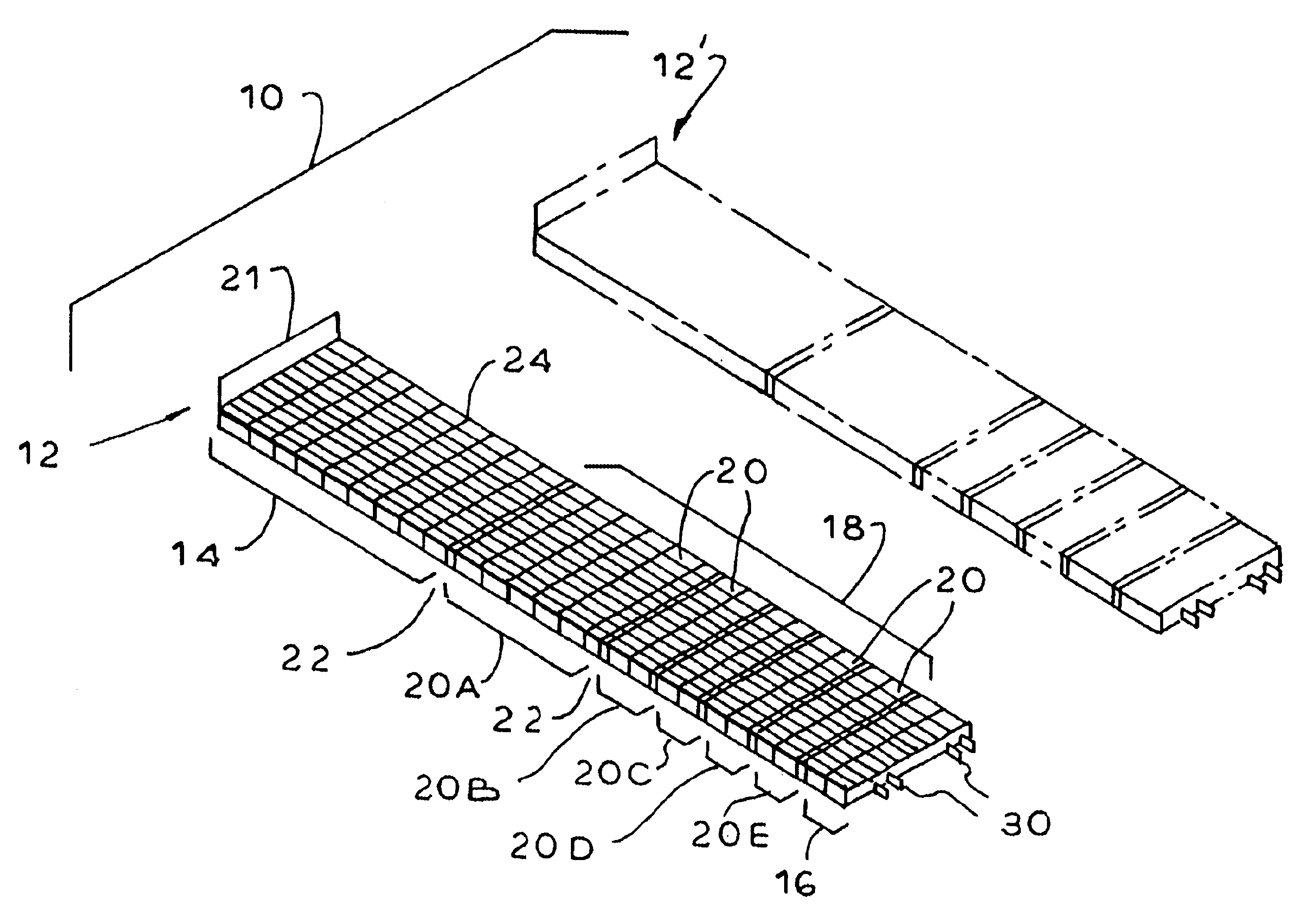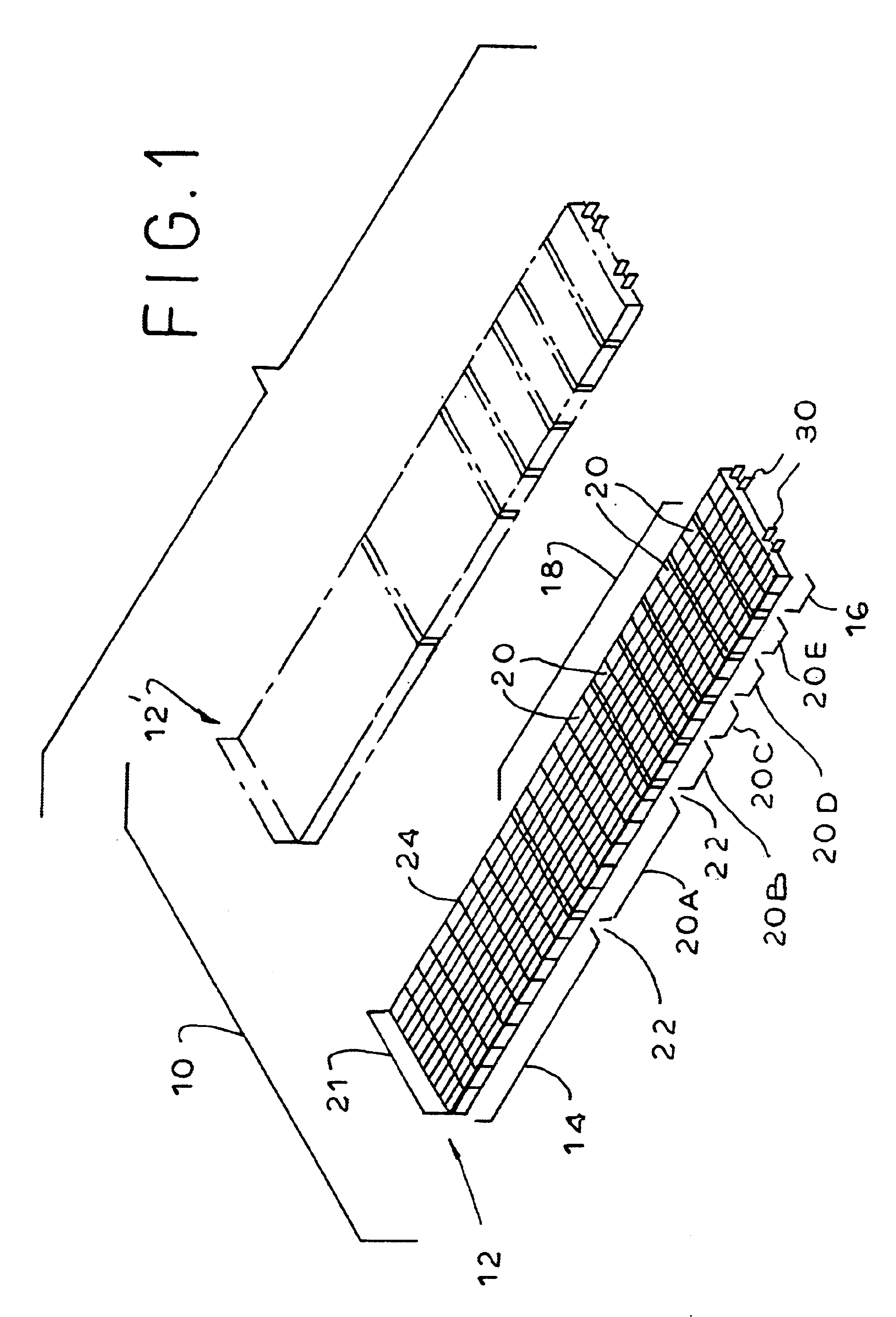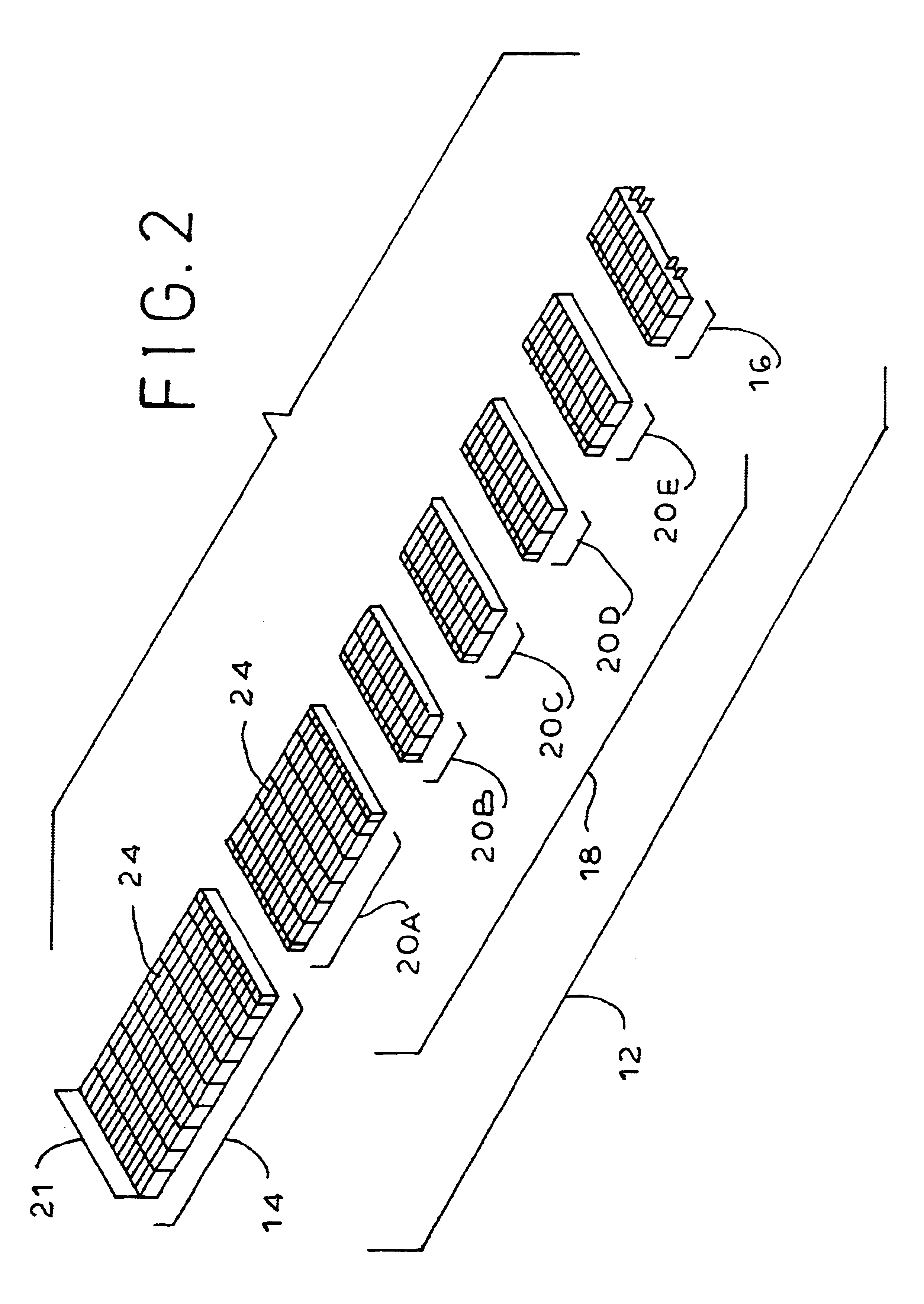Depth and width adjustable display track unit with removable partitions
a technology of display track and partition, which is applied in the field of display track, can solve the problems of not being readily accessible to a potential customer, not being easily hidden from the customer view, and not being easily accessible to counters, tabletops or refrigeration trays. small, easy to los
- Summary
- Abstract
- Description
- Claims
- Application Information
AI Technical Summary
Benefits of technology
Problems solved by technology
Method used
Image
Examples
Embodiment Construction
[0068]While the present invention will be illustrated and described herein in the context of a display shelf consisting of a single display track, it will be apparent to those skilled in the art that the same principles may be applied to any display shelf, whether it contains only one or a plurality of display tracks.
[0069]Referring now to the drawing, and in particular FIG. 1 thereof, therein illustrated is a depth-extendable display track unit according to the present invention, generally designated by the reference numeral 10. The unit 10 consists of at least two essentially identical standard depth display tracks, generally designated 12, 12′. The display tracks 12, 12′ are essentially identical in that they are formed in essentially identical molds and preferably have essentially identical surface ornamentation applied thereto. The display tracks may be purchased as a kit consisting of at least two such tracks 12, 12′ to form the unit 10, or each track 12, 12′ may be purchased ...
PUM
 Login to View More
Login to View More Abstract
Description
Claims
Application Information
 Login to View More
Login to View More - R&D
- Intellectual Property
- Life Sciences
- Materials
- Tech Scout
- Unparalleled Data Quality
- Higher Quality Content
- 60% Fewer Hallucinations
Browse by: Latest US Patents, China's latest patents, Technical Efficacy Thesaurus, Application Domain, Technology Topic, Popular Technical Reports.
© 2025 PatSnap. All rights reserved.Legal|Privacy policy|Modern Slavery Act Transparency Statement|Sitemap|About US| Contact US: help@patsnap.com



